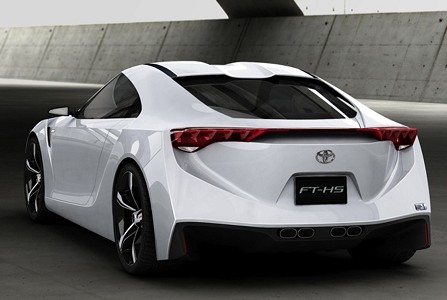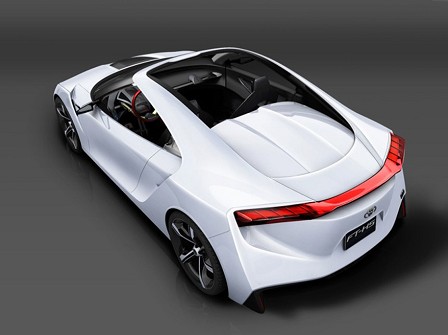Toyota Supra is a sports car / Grand Tourer, which was produced by Toyota Motor from 1979 to 2002. Style Toyota Supra was derived from the Toyota Celica, but it was also longer and wider. Since mid-1986, Supra (third-generation, Mark III) has its own model and was no longer based on the Celica. In turn, Toyota also stopped using the prefix Celica and began just calling the car Supra. Because of the similarity and past the name of the Celica, it is often mistaken for the Toyota Supra, and vice versa.
Supra also traces much of its roots in the Toyota 2000GT with the primary instance is its engine. The first three generations were offered with a direct descendant of the Toyota Crown and to the motor M in the 2000GT. All four generations of Supra production have built 6-cylinder engine. The interior dimensions were similar, as was the chassis code "A".
Along with this name and car Toyota also included its own logo for the Supra. It is derived from the original logo, Celica, being blue instead of orange. This logo was used until January 1986 when the Supra Mark III was introduced. The new logo was similar in size, with orange writing on a red background, but without the dragon design. This logo, in turn, was on Supras until 1991 when Toyota switched to the current oval company logo. (Logo dragon logo Celica, regardless of what color he was. She appeared on the first two generations of Supra, because they were officially Toyota Celicas. Dragon logo has been used to line Celica, until it too was abandoned.)
In 1998, Toyota ceased sales Supra in the United States [5] and in 2002 Toyota officially stopped production Supra in Japan.
As the iconic sports car, Supra has appeared in numerous video games, movies, music videos and television shows. Some of the most notable appearances include the Gran Turismo, Forza Motorsport, Need For Speed and Midnight Club series of video games and 2001 movie, Fast and the Furious.
- 1979 - Celica Supra Mark I introduced in 2563 cc (2.563 L; 156.4 cu in) SOHC 4M-E I6 engine.
- 1981 - Mark I engine size increased to 2759 cc (2.759 L; 168.4 cu in) with SOHC 5M-E engine I6.
- 1982 - Mark II Celica Supra introduced with the 2759 cc (2.759 L; 168.4 cu in) DOHC 5M-GE I6 engine.
- 1986 - 1986,5 Supra Mark III introduced on its platform with the 2954 cc (2.954 L; 180.3 cu in) DOHC 7M-GE I6 engine.
- 1987 - Option of turbocharger to 2,954 cc (2.954 L; 180.3 cu in) DOHC 7M-GTE engine that produces 230 hp (172 kW) 245 lb Nm (332 Nm).
- 1989 - restyling. Turbo power increase to 232 hp (173 kW) and 250 lb Nm (339 Nm).
- 1993 - 1993,5 Supra Mark IV was introduced with the 2997 cc (2.997 L; 182.9 cu in) turbo (2JZ-GTE) or non-turbo (2JZ-GE) DOHC engine.
- 1996 - Turbo only available with automatic transmission due to OBD2 certification requirements. Targa roof standard on all models turbo.
- 1997 - Manual transmission available on the turbo models. The updated front bumper and gray (instead of black), tail light surrounds. Restyled headlights, now in black with chrome rings (chrome all before), as well as a clear lens. All 1997 marked the fifteenth anniversary of the model. The new panels of gray dash to replace the previous black. Japanese production stopped in September.
- 1998 - Slight restyling of interior. 3-spoke steering wheel introduced. Slightly updated design of seats (not separate headrests) VVT-I on non-turbo models, increased power. Turbines are not available in those states that require California emissions.
- 1999 - Export Supra Mark IV stopped in the U.S., production in Japan continues.
- 2002 - Production of Supra Mark IV stops.









No comments:
Post a Comment